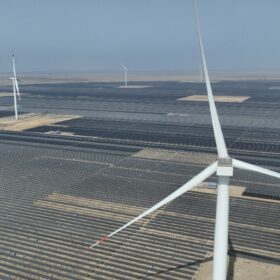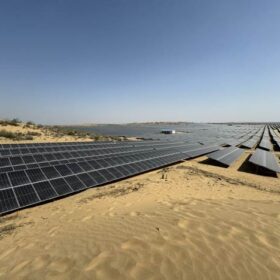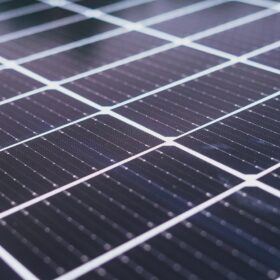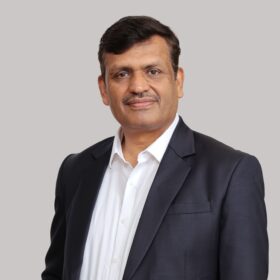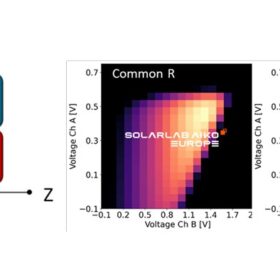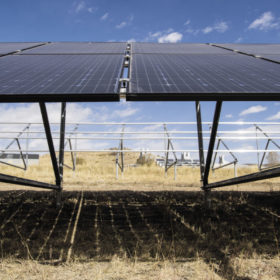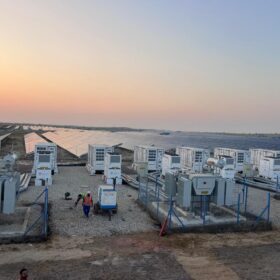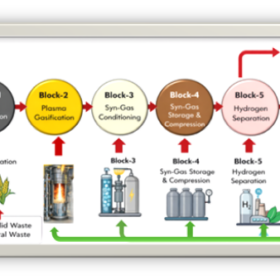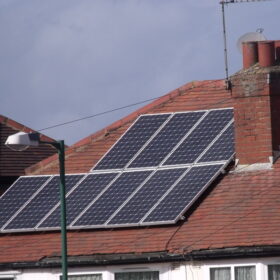AGEL tops Global Green Utilities Rankings by UK-based Energy Intelligence
Adani Green Energy Ltd (AGEL) has claimed the top spot in the latest Energy Intelligence Top 100 Green Utilities ranking, pushing past China’s National Nuclear Corp. and Spain’s Acciona.
Vikran Engineering wins 400 MW solar EPC contract from NTPC Renewable Energy
Vikran Engineering Ltd has secured an INR 459.20 crore EPC contract for a 400 MW AC grid-connected solar power project in Uttar Pradesh. The project has been awarded by NTPC Renewable Energy Ltd.
Saatvik Green secures additional solar pump order from MSEDCL
Saatvik Green Energy has secured an additional order from Maharashtra State Electricity Distribution Co. Ltd. (MSEDCL) for the supply, installation, and commissioning of 1,000 solar water pumps of 3 HP, 5 HP, and 7.5 HP capacity. This brings its total order from MSEDCL to 1,815 solar water pumps, valued at around INR 30.24 crore (exclusive of GST).
“Waaree well positioned as trusted solar partner under Europe’s NZIA Regime”: Sunil Rathi
Waaree Energies is looking to deepen its presence in Europe as the European Union’s Net-Zero Industry Act (NZIA) reshapes solar procurement and curbs reliance on Chinese module suppliers. “As a listed, Tier-1, bankable manufacturer with a proven multi-gigawatt track record, we offer the scale and credibility European developers now prioritise,” says Sunil Rathi, executive director, Waaree Group.
Aiko achieves 34.76% efficiency for 2-terminal perovskite-silicon tandem solar cell
The Chinese manufacturer said its 2-terminal 34.76%-efficient perovskite-silicon tandem lab-scale cell is based on heterojunction technology and developed by a collaboration of Solarlab Aiko Europe, Aiko headquarters, and its R&D in Yuwi, China.
Sembcorp completes acquisition of ReNew’s 300 MW solar asset in Rajasthan
Sembcorp has completed the acquisition of a 100% stake in ReNew’s 300 MW solar power project in Fatehgarh, Rajasthan.
Trina Solar completes sale of 5 GW U.S. module plant to T1 Energy
Trina Solar has completed the sale of its 5 GW US solar module factory to T1 Energy, exiting direct manufacturing while retaining a minority equity stake.
India eyes 230 GWh of energy storage to meet 300 GW peak power demand
With peak power demand expected to approach 300 GW in the coming years and electricity demand growing at 6–7% annually, India would require nearly 230 GWh of energy storage capacity by 2030 to ensure grid stability, flexibility and reliability—said Bhupinder Singh Bhalla, Former Secretary, MNRE, at the Indian Power & Energy Storage Conference 2025, organised by FICCI.
Juniper Green Energy’s 100 MWh merchant BESS nears completion with 60 MWh commissioned
Juniper Green Energy has successfully commissioned 60 MWh of its 100 MWh merchant battery energy storage system (BESS) in the Bikaner district of Rajasthan. The remaining 40 MWh capacity is expected to be commissioned shortly.
The Hydrogen Stream: NTPC NETRA to set up plasma gasification-based green hydrogen plant
NTPC’s R&D wing NETRA will set up a plasma gasification-based green hydrogen plant on its campus at Greater Noida. The plant will be designed to produce one tonne of green hydrogen per day.
